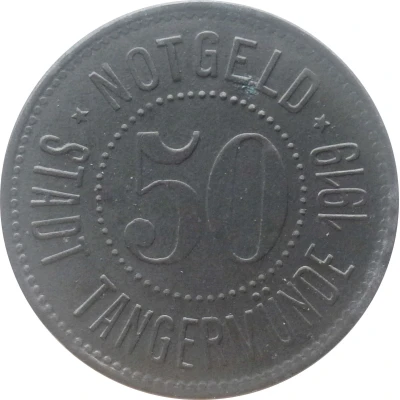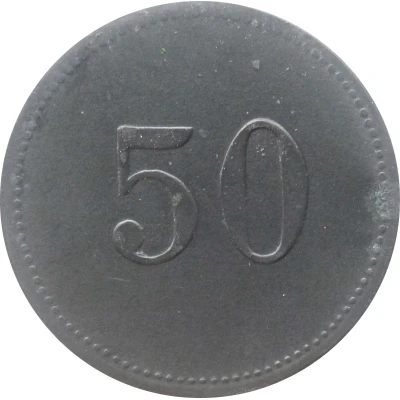


© Willem63 (CC BY-NC-SA)
50 Pfennigs - Tangermünde
1919 year| Zinc | 2.8 g | 24.3 mm |
| Issuer | City of Tangermünde (Prussian province of Saxony) |
|---|---|
| Period | Weimar Republic (1918-1933) |
| Type | Standard circulation coin |
| Year | 1919 |
| Value | 50 Pfennigs (50 Pfennige) (0.50) |
| Currency | Mark (1914-1924) |
| Composition | Zinc |
| Weight | 2.8 g |
| Diameter | 24.3 mm |
| Thickness | 1.0 mm |
| Shape | Round |
| Technique | Milled |
| Orientation | Medal alignment ↑↑ |
| Demonetized | Yes |
| Updated | 2024-10-04 |
| Numista | N#146504 |
|---|---|
| Rarity index | 80% |
Reverse
Pearl rim, denomination centered
Script: Latin
Lettering: 50
Edge
Plain
Comment
Issuing body: [Stadt, Provinz Sachsen].Engraver: Gustav Brehmer in Markneukirchen
Interesting fact
One interesting fact about the 50 Pfennigs - Tangermünde 1919 coin is that it was issued during a time of economic turmoil in Germany, known as the "Inflationary Period" (1914-1924), when the value of the German mark plummeted, and the prices of goods and services skyrocketed. As a result, the government was forced to print more and more money to keep up with the inflation, leading to a significant decrease in the value of the currency. Despite this, the 50 Pfennigs coin remained a widely used denomination during this time, and many people relied on it for their daily transactions.